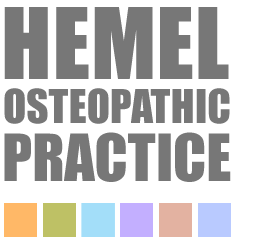Questions about Osteopathy
Does Osteopathy hurt?
No, treatment itself in skilled hands should be relatively painless. If your muscles are very inflamed or you are in acute pain we try to handle you as gently as possible.
Are there any side effects with treatment?
Side effects are generally very rare. You might experience some tiredness/soreness for a few days afterwards but this will subside quickly. Osteopathy is a very safe and effective form of treatment and most patients feel substantially better for it.
How long will it take for me to get better?
Your rate of recovery depends on several factors e.g. age, general health, daily activities, as well as the type of problem you have. Your particular situation will be discussed during your first consultation. Usually several sessions are required to overcome a problem, as with most forms of medicine, osteopathy is not necessarily a cure.
Is it necessary to see the GP first?
The NHS does not currently fund osteopathic treatment in Hemel Hempstead so a formal GP referral is not necessary. Most patients self refer or are recommended by word of mouth. If seeking private healthcare cover one must check the eligibility of their particular scheme, as some require a GP referralbefore the onset of treatment.
What is the difference between an Osteopath and a Chiropractor?
Osteopathy and chiropractic are both forms of treatment that can be used to treat musculoskeletal problems such as back and neck pain. Often the techniques used are very similar and the results obtained are comparable.
One of the main differences is the language that the practitioners use. Osteopaths talk in terms of joints not moving properly and muscles being too tight, whereas chiropractors see joints as being out of position.
This difference means that chiropractors often use X-ray examinations to diagnose the musculoskeletal problems whereas osteopaths assess mobility of the individual joints using their hands. Each form of diagnosis and treatment would correct the problem satisfactorily.
What is manipulation?
The aim of this osteopathic technique is to increase mobility in a joint and therefore, improve the function in of that particular area. Manipulation (or adjustment) is used to improve the mobility of joints in the spine or peripheral joints such as the ankle or wrist. It consists of simply gapping the articular surfaces, within a joints normal range of motion. It is common to hear a 'pop' or 'click' when the manipulation is performed. You should always be warned of this in advance.
Can manipulation be dangerous?
Manipulation of a healthy spine is not at all dangerous as the joint is moved within its normal anatomical range of movement. Manipulation is never used on babies as their skeletons are not fully developed and elderly patients, who may be at risk of osteoporosis, undergo adjustments less frequently. The case history is essential for assessing anyone at risk.
What should I wear?
As osteopaths work holistically we often need to assess or treat other areas of the body away from the site of pain, so it may be necessary to remove some of your clothing. Patients who are uncomfortable with this are welcome to bring shorts/vest to change into.
Where do I park?
We have off road parking available in our driveway.
